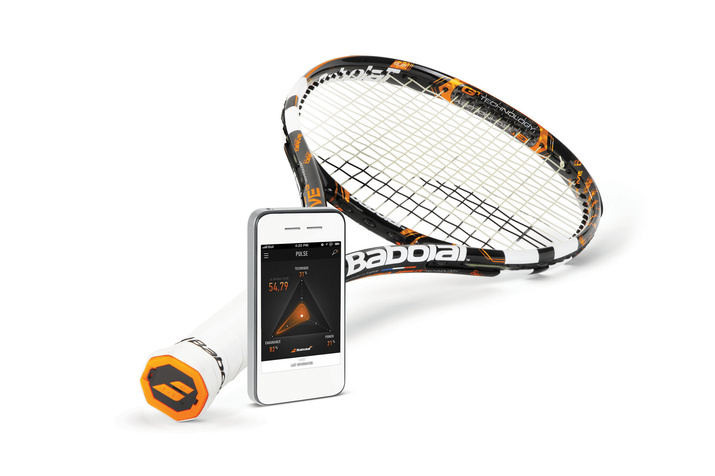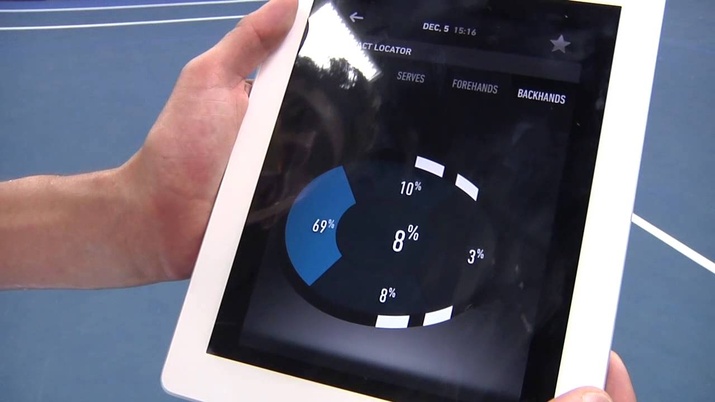Don't miss any stories → Follow Tennis View
FollowHow Smart Rackets Could Change Tennis
“It’s not a matter of months, it’s a matter of days.” That’s the word from Eric Babolat, CEO of the French tennis company Babolat who believes his “smart rackets” will take the tennis world by storm. Equipped with game-changing technology, these rackets may hit the professional circuit as soon as next week. But what exactly do they do? Matt Tewhatu takes a closer look at them and, more importantly, a look at their potential immediate introduction to the circuit.

You can be forgiven for feeling a little out of touch by not knowing what a smart racket is. Unless you spend your time glued to the research and development sections of tennis company websites, it would be an announcement that would take you completely by surprise. But these smart rackets are set to take the tennis world by storm. And Babolat leads a number of companies, including technology companies like Sony, looking to release a smart racket this year. So, what exactly are they?
The aesthetics resemble your average Babolat. It’s the same weight, the same size, and, by all accounts, the same feel. Other than a blue futuristic ring around the end of the handle to designate its power state, it looks exactly the same. It is also made of the same material. But this is about where the similarities end between the two.
In the handle of the smart racket are a number of sensors that are connected through the racket to the strings. Once activated by the player gripping the racket, the sensors convert the racket hitting the ball into data. This data can be then transmitted via a Bluetooth signal to any “smart device” (laptop, tablet, or phone). The data records a number of elements about each stroke, including the power of the stroke, the impact of the ball on the racket strings, the type of stroke, the type of spin, and the amount of game time the racket was in play. This data then can be shared via social media websites or mapped to analyze patterns of play, track improvements, or improve efficiency in strokes.
It all sounds very hi-tech, doesn’t it?
Over the course of its history, tennis has been a sport open to technological changes. From wooden rackets of the 1960s to aluminum rackets to the graphite and composite rackets that we use today, tennis has progressed with the times. Also proving its propensity for change is the way in which the ITF has embraced the use of Hawkeye technology, giving players recourse for close umpire decisions.
But what is strange about the announcement that smart rackets may be used on the circuit is how the ITF handled the decision to smart devices, such as potentially game-changing devices in ATP and WTA tournaments. The decision to allow this device on tour may also have profound ramifications on the future of tennis.
First, the ITF changed its rules to allow for smart devices in ITF-sanctioned tournaments after January 1, 2014. This would finally allow for devices such as GPS and player movement trackers to be used on the players. Six days later, on January 7, Babolat announced the release of their smart racket, a device 10 years in the making named the Babolat Play. Few would have thought that the ITF’s decision would open the doors for such a game-changing device like a smart racket. While governing bodies in world tennis would have known Babolat’s Play was entering the market, it is peculiar how such a significant decision by the ITF was kept quiet so well.

The introduction of these smart rackets on the professional tour may also have large ramifications on the future and the mechanics of the game. Ask most players on the tour, and they’ll tell you tennis is a game based on feel and the fundamental strengths and differences between two players. Suppose data collected by smart rackets are distributed and broadcast, much as player game patterns are on Google. Anyone could access this information and use it to their benefit, such as an upcoming opponent. While this is information readily available to coaches, alleviating any immediate alarming concerns of the smart racket’s influence, their presence may diminishes the traditionally raw battle between two foes.
While some believe we haven’t come too far since the wooden rackets of Bjorn Borg, the ITF’s ability to progress with the times and adopt technology is impressive. The developments of digital rackets suggest further evolution of the game. On the other hand, if Eric Babolat’s premonition is correct, the adoption of smart rackets may have come prematurely and bring adverse as well as positive changes to the current game and its growth.










